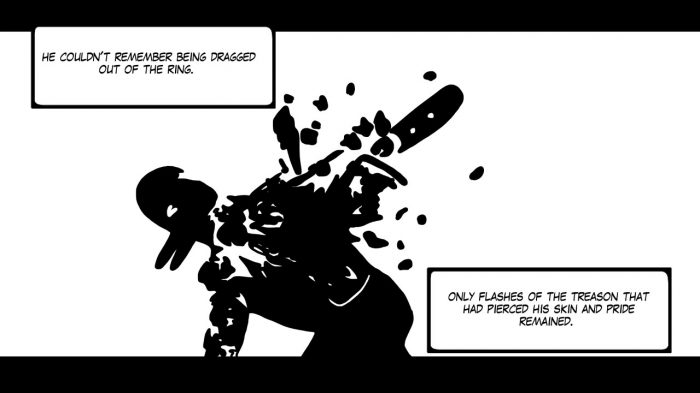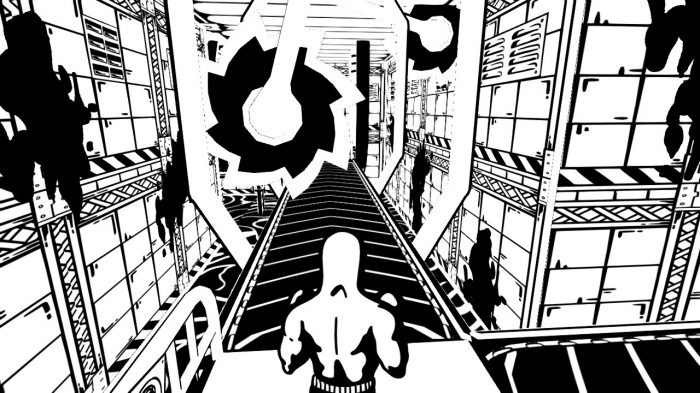Duck, Duck, Dodge
Primo, AKA Pato Box, champion boxer, has got this fight down, but someone’s got other ideas. This fight has been rigged and shortly after Pato Box is stabbed in the back in a dark alley left for dead by an unknown assailant. Pato Box is treated for his injuries just in time and is informed that the likely culprit responsible can be found in the HQ of his employer Deathflock. It is here that I should also mention that Pato Box is a man with a duck’s head, so expect more duck-based puns/gags to crop up than you ever expected to exist.

To achieve Pato Box’s quest for vengeance he must fight and defeat multiple bosses before reaching the head of Deathflock. Many of the boss fights require you to traverse through their floor of Deathflock’s HQ to reach them. Each floor is themed around the nature of their respective boss and this influences what you must do. For example, Pizzicanatra, Deathflock’s resident butcher, is found in the building’s meat factory, which sees you having to carefully navigate conveyor belts whilst avoiding numerous giant buzz saws that will easily cut you into multiple duck fillets. Let’s just say it is a good thing that the game uses a black and white colour palate as there is a whole lot of blood, everywhere.

It is this distinctive use of the stark black & white colour scheme that is Pato Box’s most defining feature. Yes, it is reminiscent of Frank Miller’s Sin City and even more so to that of PlatinumGames’ underappreciated MadWorld, but Pato Box still manages to make this style its own; largely helped by the varied stages and boss fights.
The boss fights are the core of Pato Box; the stages preceding them are a nice addition, but ultimately this game is a more mature, weird, and updated take on Nintendo’s long-running (but dormant) Punch-Out series. You’re face to face with the boss, and each one has a vastly different fighting style. From your side of the fight, your attacks remain the same each time, punch, high punch, and dodge. This sounds rather simplistic, but simplicity is necessary so that you can react quick enough to your opponents, as their attacks are relentless. It’s better to think of a fight not from the perspective of an attacker, but of a defender. Hits must be carefully timed, with fights seemingly having more in common with a rhythm game. Recognising this makes the game easier to comprehend in terms of what is required from you the player, but the frights are still merciless.

There is added motion control support for the boss fights, but this quickly becomes an inefficient way of playing. button controls are the optimum way to play; the Pro Controller also helps here. Precision is key here as the game is unrelenting – you will be reattempting the same fight multiple times. Unfortunately, this takes away from the sense of challenge and comes across as if it is punishing you just for the sake of it, which is a shame as the core mechanics are enjoyable. Pato Box’s tale of getting knocked down becomes all too real for the player, making this a journey only for the most committed.
Pato Box
Summary
Pato Box stands out for several reasons, and there is clear inspiration from certain successful games and films. Developer Bromio does an admirable job at implementing these cohesively, but it’s unfortunate that difficulty is a flaw overshadowing this black & white revenge tale.

